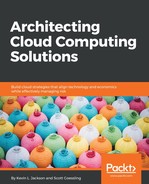The cloud, and technology in general, has a notion of fashion to it. Some things are in vogue while others fade from favor quickly. As cloud conversations happen, it is vital to see ahead of the curve and keep in mind overall direction. For decades, a consistent direction has been to place more power in the hands of the end user/consumer. Our cell phones today have more compute power and run more applications than many desktop computers sold a few years ago. Think forward a bit to IoT. Significant compute power and data are at our fingertips. Connected cars are currently built with nearly 40 processors, almost 100 sensors sending out 25 GB of data per hour. Connected cars are described as rolling data centers.
As technology continues to innovate and progress at incredible speeds, it is essential to raise your awareness of immerging trends. It is also important to quickly distinguish tech fashion from tech innovation. Real innovation always has an economic driver that is sustainable. Starbucks coffee did not invent coffee. Starbucks was when the first-time coffee and culture became inseparable. The iPhone was not the first mobile device; however, it was the first time a mobile device connected many of the most important facets of our home, work, and play lives. The cloud was not the first deployment of virtualization. The cloud is the first innovation that has directly connected the concepts of technology, strategy, and economics forever changing the way we build, deploy and consume technology and services.
The shortlist here includes some very innovative ideas that build on and extend the core concepts of cloud computing. These are a few things to watch as they climb the two hills of innovation. More on that later in this book:
- Grid computing: Distributed and parallel computing capability where a virtual computer is composed of a cluster of networked and loosely coupled individual computers which act in concert to perform very large tasks.
- Fog computing: A distributed computing model that provides IT services closer to the fog client. Sources are near-end user edge devices. Fog computing can handle data at the network level, on smart devices, and the end-user client side instead of sending data to a remote location for processing.
- Dew computing: Dew computing is positioned at the ground level for the cloud and fog computing. When compared to fog computing, which is designed to support IoT applications that are sensitive to network latency and require real-time and dynamic network reconfigurability, this variant pushes the computing applications, data, and low-level services to the end users and away from centralized virtual nodes.
- Edge computing: Edge computing extends cloud computing by pushing the processing, applications, and data as far away from centralized resources as possible. Moving work to the edge also means that devices may not always be connected to the internet (that is, mobile, laptop, tablet). This means that processing would also need a high level of redundancy with content highly distributed.
- IoT: IoT is connecting the physical world with the logical one. Sensing and processing technology are being placed where needed when needed. Cloud computing is rapidly morphing to help catch, process, and utilize the vast amount of data already being generated by IoT initiatives and projects.
- AI, neural networks, and machine learning: These concepts have been pulled together because they are hard to separate and sometimes they are used interchangeably even though there are distinct differences. AI has been around for decades, it is not new. However, cloud computing has removed many of the barriers that were slowing innovation; 300 computers for one hour can process a staggering amount of data, connect it, correlate it, learn from it and apply it. Cloud computing innovation has truly helped this field leap forward recently.
